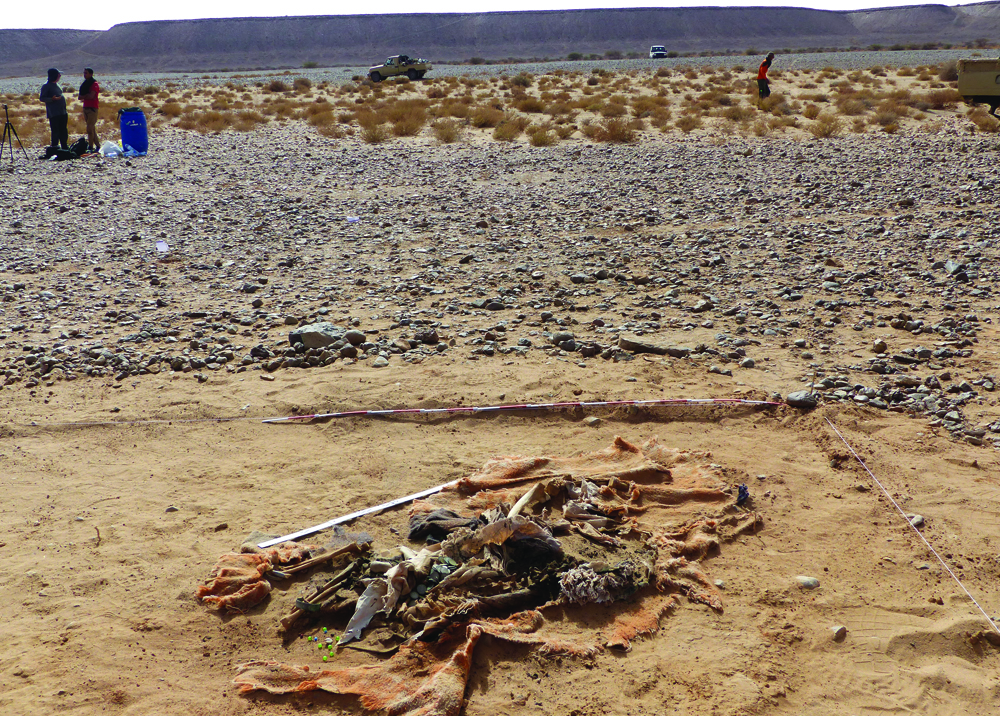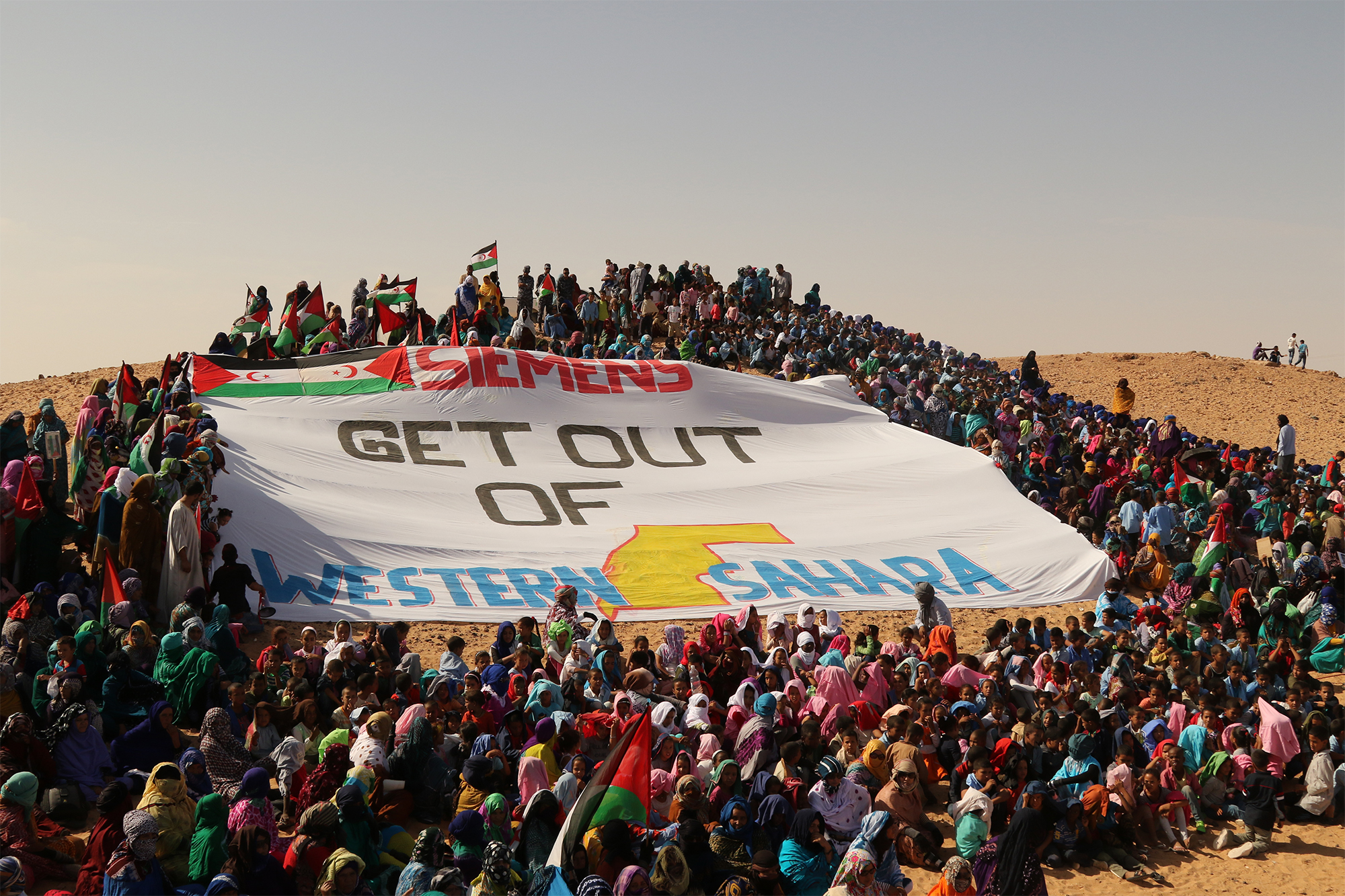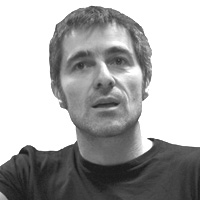"The process of exhumation in the Sahara has allowed a judgment to be handed down against eleven Moroccan soldiers"
- At the end of June, the working group of Hegoa, UPV/EHU and Aranzadi carried out several exhumations in the Free Sahara, subsidised by the Basque Country Fondoa. Anthropologist, historian, professor and member of this group Lourdes Herrasti tells us about the historical context, technique, problems, wall, present and future.

Why the Sahara?
Carlos Martín Beristain has always been interested in the situation of the Saharawi people and the violation of their human rights. He has taken many trips to the desert and has received many oral interviews. Most of them are listed in the book The Oasis of Memory. He discovered some mass graves, with a fairly precise location. As the place is located in the liberated area, the possibility of exhumation began to be studied. At that time our team already had experience with the War's deposits of 1936. We left there for the first time, in June 2013.
You've found the bodies of the executed people. In what year were they killed?
12 February 1976. It is a very important date, since Spain withdrew its troops on 27 February, that is, at the time of their death they were Spanish for all purposes. Since 1957 the Sahara was the Spanish province, as Gipuzkoa can include in the identity document of a citizen or citizen of the Basque South, his own was written in the Western Sahara. This will be very useful when the facts are brought to justice.
The Sahara Decolonization Act was published in the official BOE of Spain on November 20, 1975,…
On the day of Franco’s death, imagine… Taking advantage of the fact that Franco and Franco themselves were sick, the movements began to welcome the Sahara: north Morocco and south Mauritania. The king of the time, Hassan II.ak, launched the Green March in October 1975. This is a supposed civilian column that is planned to be installed in the Western Sahara. The weakness of the Spanish State became apparent and the lands began to invade. But Morocco's propaganda was false, because together with the civilians the army and the police entered the Saharawi territories. In addition to entering, they committed serious violations of human rights, kidnappings, murders, torture… They also bombarded some places, such as Tifariti, the city in which we work or Oum Dreyga, which is now in the same wall. In this context, the abovementioned murders took place, taking advantage of the Spaniards’ neglect, without any control whatsoever.
The exact location of the graves was given by a witness, what story is behind it?
This person was a pastor and when she was a child she was arrested by Moroccan soldiers, along with others, who were on the spot. Being so young, a soldier, piety, gave him the chance to survive “Gora Morocco! Long live Hassan!” The boy did it, and the soldier hid it in the truck under a blanket. From there he heard the detonations and knew where the site was, in Amgala, very close to the wall that the Moroccans had raised. That child is an adult today, and he took us to the place where the corpses were.
The wall you mentioned is not well known...
It is the second longest wall in human history, behind that of China. With more than 2,700 kilometres in length, Morocco created the Sahara to separate the occupied from the free Sahara, between 1980 and 1987. It's guarded by thousands of soldiers and it's a minefield, yet today artifacts are maiming a lot of people. Bedouin children are the most affected. After that, we did our first job. We did not trust the Moroccan soldiers too much, so we were disguised with the clothes worn by the Mauritanian nomadic pastors. We found six bodies, two of them 15-year-old children, whose identification was very easy through documents.
However, once the samples are taken, we bury them again. About two hundred meters away there was another pit with the bodies of the two people. They had the Spanish identity card, so their identity was clear. The samples and DNA ensured that these two people were the same as the ones documented. In total, eight people have left the street and eight have been identified. Because of the holes they had in their skull and in various parts of their bodies, we were able to show that they were shot to death.

Had they been fugitives?
They were probably Bedouins, nomads, who had escaped from the occupation of Algeria towards Tindouf. They met a Moroccan patrol and they finished. On a second trip we also found the corpses of two fighters at the place called Fabret Leguian, which allowed us to conclude that it was a fight for the number of ammunition we found around. Unfortunately, we have not been able to identify them. But there was another one that was close to them. He died in 1976 and was found in 2013.
You mentioned the Free Sahara, what is the current administrative situation?
The Sahrawi people are divided into three territories. Some are in camps near the city of Tindouf, they are refugees and live outside their country in Algerian lands. The Sahrawi land has two occupied areas, under the command of Morocco, and Libre, under the control of the Saharawi government. The wall, from North to South, to which I have referred before, is intertwined. We have done our work in the free zone by entering from Tindouf. We know that there are more graves in the occupied area but there is nothing to do at the moment.
In terms of organisation and infrastructure, it will not be easy to carry out this type of work.
We work through the members of AFAPREDESA (Association of Relatives of Sahrawi Prisoners and Missing Persons). The documentation is self-contained and identified with the data they contain. They are the ones escorted to the graves, because they know this area better than anyone else. Working technically is easier than here [in the Basque Country], you just have to remove the sand. But because the bodies are quite clear, they're often not whole, they've been pulled out by the wind or damaged by an animal. However, the drought has kept the bones in a very good state and the methodology has been the usual, the archaeological.
What do they do with the data received?
We document and produce reports. They are free and at the disposal of those who wish to do so, as it is our intention to extend this information as much as possible. But not only that, the Sahrawi people, with their report in hand, denounced the killings in the Spanish National Court, and Judge Pablo Ruz cited Carlos Martín Beristain and Pako Etxeberria to make a statement. With all this information, and thanks to the exhumations, a sentence was passed on 11 Moroccan military charges in 2015 and, today, there is a warrant for arrest all over the world. The basis is the violation of human rights against some Spanish citizens. There's the judicial truth.
You came back in June 2018, did you find the same situation?
We had news of three other graves, and we decided to come back. The situation has been different: in each grave there was a body of one person and the three were women. The first one was found in Meheires, very close to some haimas, in this case it was also detected by the pastors. This is a woman over the age of 30, who had hardly any object, but was the zipper of a shirt. The second one was in Amgala, with his hair off the surface, but he did not have objects nearby either. The third, very close to the pit we pulled out in 2013, was an older woman and we found her pendants, necklaces, pendants, many beads, a colony jar and coins with Franco pictures of 1, 5, 25 and 50 pesetas of the time. Total 690 pesetas. It was a fortune in 1976 and it shows that it wasn't a robbery.
Do you intend to return it?
If no more graves are found, no, but we are in the hands of AFAPREDESA. However, another objective of this last trip has been the training of those there. Pako Etxeberria has taught them forensic techniques and Laura Pego has developed the legal area and have also learned techniques for conducting oral interviews. The idea is that they can do that work without external help. In order for it to develop as a people, steps must be taken with those small things.
The Sahara issue seems immobile.
The Sahara is one of the smallest conflicts that currently exist in Africa, taking into account the number of people and material resources. In the media, the issue is also discarded, when summer children’s visits do not make it appear. We have Congo, South Sudan, SOMALIA, Mali, Islamism, migration... That is why international policy and the risk of forgetting what happened in the Western Sahara. Their struggle has a great deal of material support, of cooperation, but politically nothing can be done without external aid, and in this area Morocco’s position is very strong, there does not seem to be any solution without going through it. There are some moves, but it seems that the issue is going to last a long time.
Pako Etxeberria auzitegi-medikua eta Laura Pego abokatua (irudian zutik) Saharako herritarrak trebatzen aritu dira oroimen historikoaren berreskurapenean.
Etxeberriak arlo praktikoa jorratu du gehien bat, hau da, deshobiratze prozesua nola egin lehen aztarna aurkitzen denetik azken txostena idatzi arte. Pegoren lana arlo juridikoari egon da lotuta, nahiz eta beste esparru batzuk ere garatu dituen. Alde batetik justizia trantsizionalaren oinarriak azaldu zituen, hau da balizko trantsizio baten aurrean ezarri beharreko neurriei buruz eta bestetik, Istanbulgo eta Minnesotako protokoloak izan zituen hizpide. Lehena torturaren erabilpena aztertzeko erabiltzen da, bigarrenak gorpu bat exekutatua izan ote zen jakiteko balio du.
Metodologia irekia izan da, mahai-inguruak antolatu eta zalantzak argitzeko asmoz; arazo handienak ahozko testigantzekin hainbat informazio jasotzeko orduan izan ohi dituzte. Euskal Herriko torturaren inguruko txostenean oinarritutako esperientzia ere baliatu zuten Etxeberriak eta Pegok jarraibideak eman ahal izateko.
The girl who appears in the center of photography, which can hardly be considered historical, is writing a list of adjectives: I, you, he, we, you, they. Looking down, I couldn't see what his gaze looked like.
Insensitive to the work of the photographer, you, slowly and... [+]
Leaving behind books, libraries and their benefits in April, Kabiak Sahrawi wishes to recall the dark side of his history, which is of greater importance in defending the identity and survival of peoples. We are talking about the destruction of the age-old and usual libraries... [+]
Sahara, herri bat erresistentzian liburua argitaratu du Kristina Berasainek. Urte luzez jarraitu du Mendebaldeko Saharako gatazka, 2005ean BERRIA egunkariko kazetari gisa lurralde okupatuetara lehen aldiz bidaia egin zuenetik.
The Spanish Foreign Minister denies that Spain is the administering power of the Western Sahara. But yes.
For years, Spain said that it was neutral on the Sahara issue, albeit a lie: it was very partial. For Morocco. The Palestinian National Power has a diplomatic mission in... [+]
Marokok 2020an ia hiru hamarkadatako su etena hautsi zuenetik, gerra berrabiarazi dute Rabatek eta Mendebaldeko Saharako askapen mugimendu nazionalak. Polisarioa XVI. Kongresua egiten ari da egunotan, eta estrategia berria eztabaidatzen ari dira. Buruzagitzan Brahim Galik... [+]












, Nafarroako parlamentuan..jpeg)










